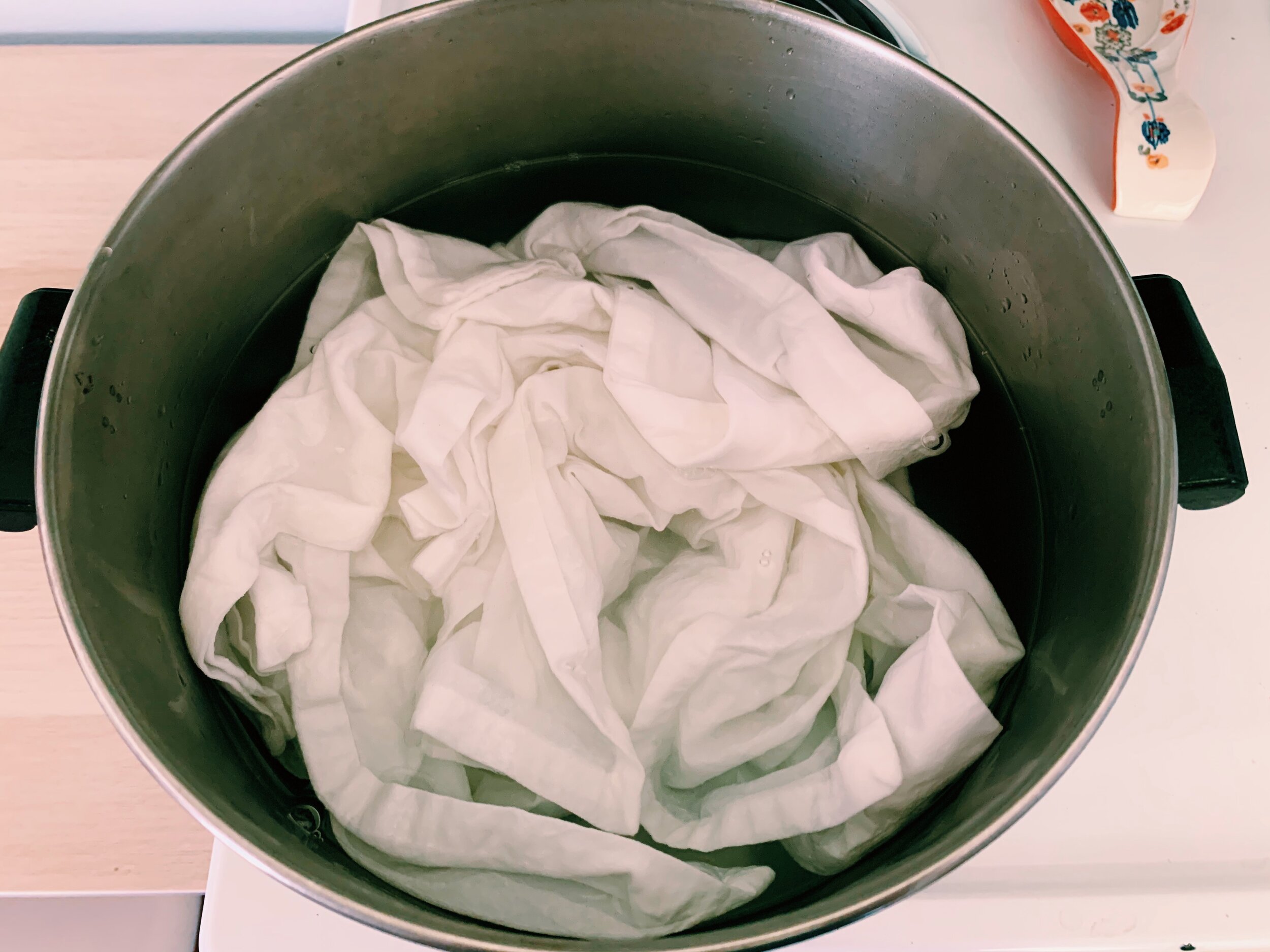NATURAL DYING WITH LOGWOOD
For this dying session, I cheated a bit - I ordered the powder extract instead of working with the original logwood. (whomp. whomp.) Logwood trees were originally found in Central America. They were introduced in Europe in the late 1500s by the Spaniards. It is said, that the country of Belize actually grew from English logging camps exporting logwood. Europeans mainly used logwood to dye garments black.
Your first step is to stack the fabric in a mordant. I used Alum. If you purchased the actual pieces of logwood, you would soak them overnight, then drain the dye, then repeat that process until you had extracted all of the color from the wood. I basically just tossed the powder into the water - so major cheating on my part. Logwood is very pH sensitive, so I was pretty nervous to try to dye with it. When I first put the extract into the water, the dye bath looked a bit pinkish-red.
If you add cream of tartar, the dye will turn brown. I was going for more of a purple, so I added soda ash to the dye bath. If you wanted to create black, you would add iron.
I let the fabric soak on low heat for about six hours. After six hours, I took out the napkins, rinsed with water, and hung to dry (out of the sunlight). The final result was amazing! Blacks - purples - greys - browns. This color does not hold well and will fade with each wash. Have you ever dyed with logwood before? Did you cheat, or did you use the actual wood chips? I’d love to hear about it!








